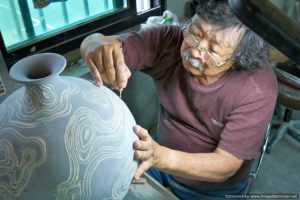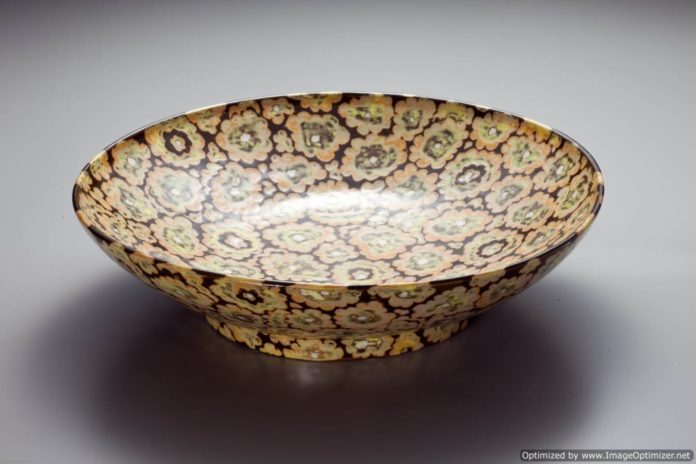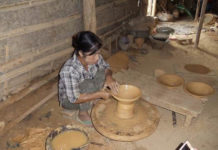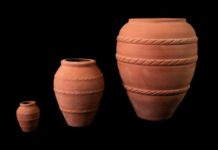The masters of ceramic arts in Taiwan are well established. With an ancient history, the techniques are mature and well-developed. But potter Su Shih-hsiung has been able to develop a master a new technique, glaze-carving. He applies layers of glaze, from carving and polishing, to make colorful and hierarchically-structured ceramics.
 Su Shih-hsiung majored in art, but is also a self-taught potter. Though working in ceramics for 40 years, he still seeks to innovate. Back in the Song Dynasty, Chinese artists already applied the so-called “scratch carving” skill. Compared with the single-layer monochrome of the Song Dynasty, Su Shih-hsiung’s glaze-carving serves as a great leap forward. Su applies multi-layer polychrome design to bring out more layers and colors.
Su Shih-hsiung majored in art, but is also a self-taught potter. Though working in ceramics for 40 years, he still seeks to innovate. Back in the Song Dynasty, Chinese artists already applied the so-called “scratch carving” skill. Compared with the single-layer monochrome of the Song Dynasty, Su Shih-hsiung’s glaze-carving serves as a great leap forward. Su applies multi-layer polychrome design to bring out more layers and colors.
To implement glaze-carving, it must go through highly-complicated procedures. The whole process, in itself, is a very challenging task. First of all, it starts with wheel throwing to make pot. Potter then places the object in the kiln for a 800℃ bisque firing. When the unglazed clay comes out of the kiln, the potter smooths and grinds the bisque and then puts on glaze, before next step of carving. When it comes to carving, the potter prepares the pattern, color layout and hierarchical design. Potters follow the plan and apply layers of glaze on top of the object. After that, tools and skills are used to carve out the desired colors and patterns before going back to the kiln for 1230℃ of bisque fire.
Glaze-carving is rich in sumptuous colors. The glaze formula and glazing process are essential to success. The layers must have the correct thickness, so the glaze will not flow when coming out the bisque fire, nor will it mingle. The curve design after firing is important.
Master Su Shih-hsiung has overcome difficulties before finally developed his own glaze-carving ceramics. The work is versatile and yet full of delicate touches and details. For his innovation and commitment, Su Shih-Hsiung was awarded the National Crafts Achievement Award in 2010. Su’s glaze-carving works are often on display at the Yingge Ceramics Museum in New Taipei City.





